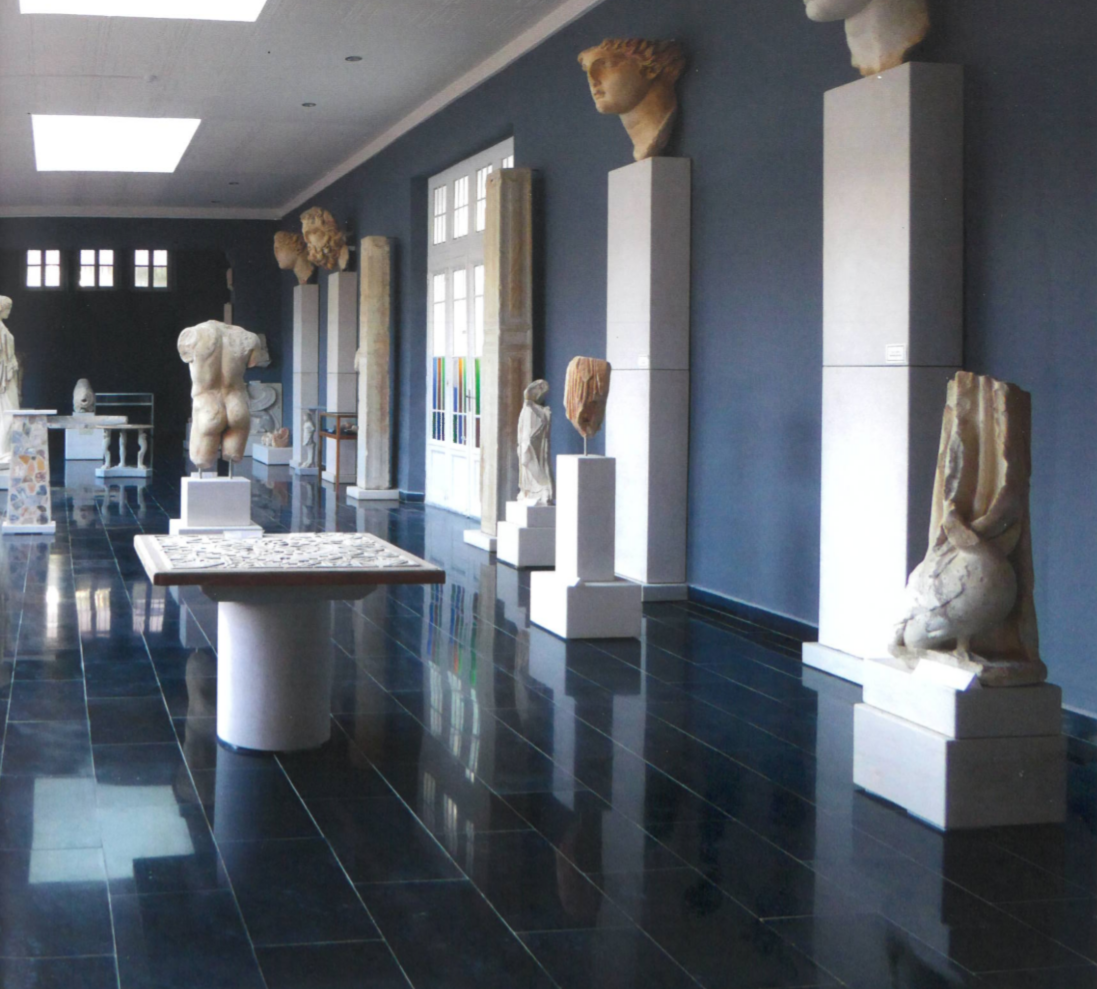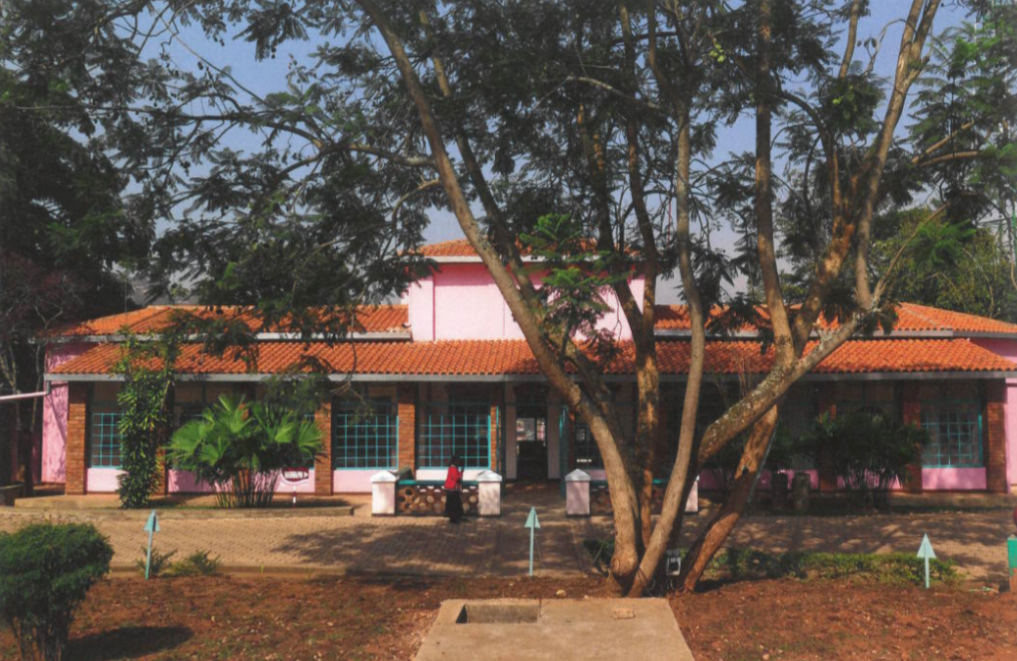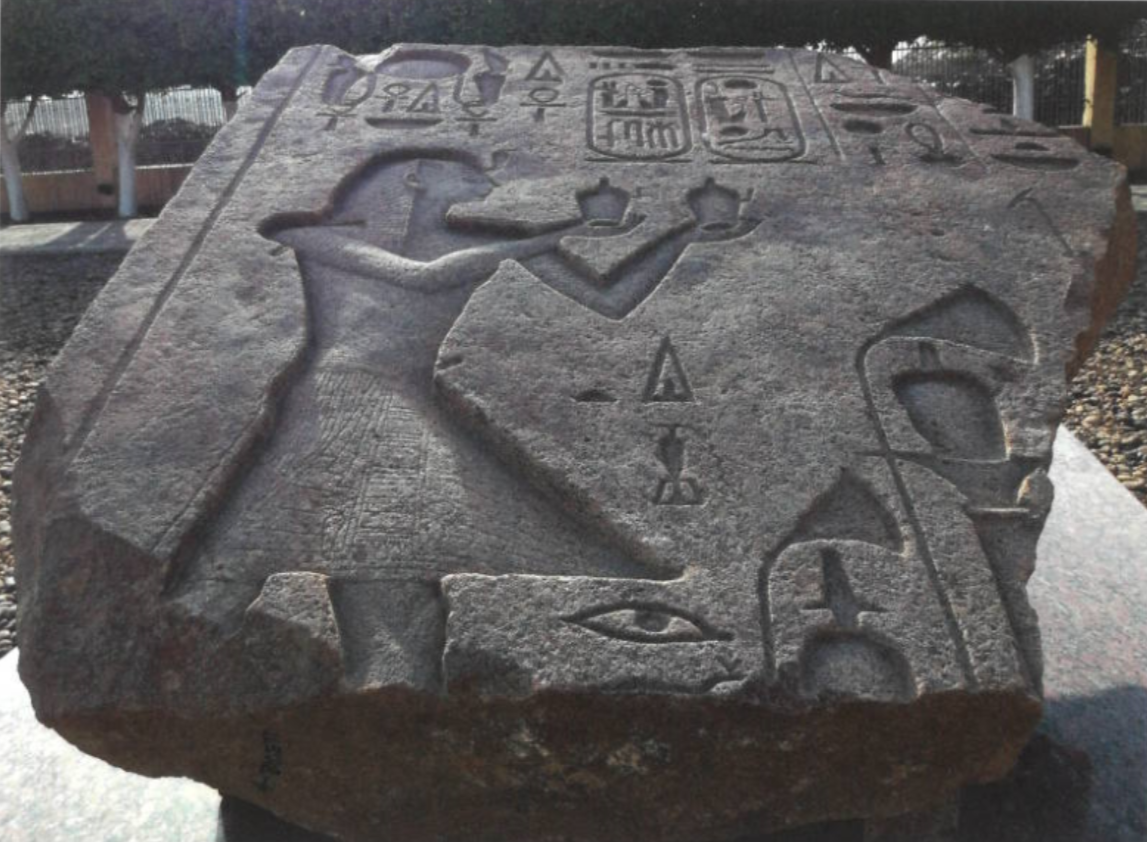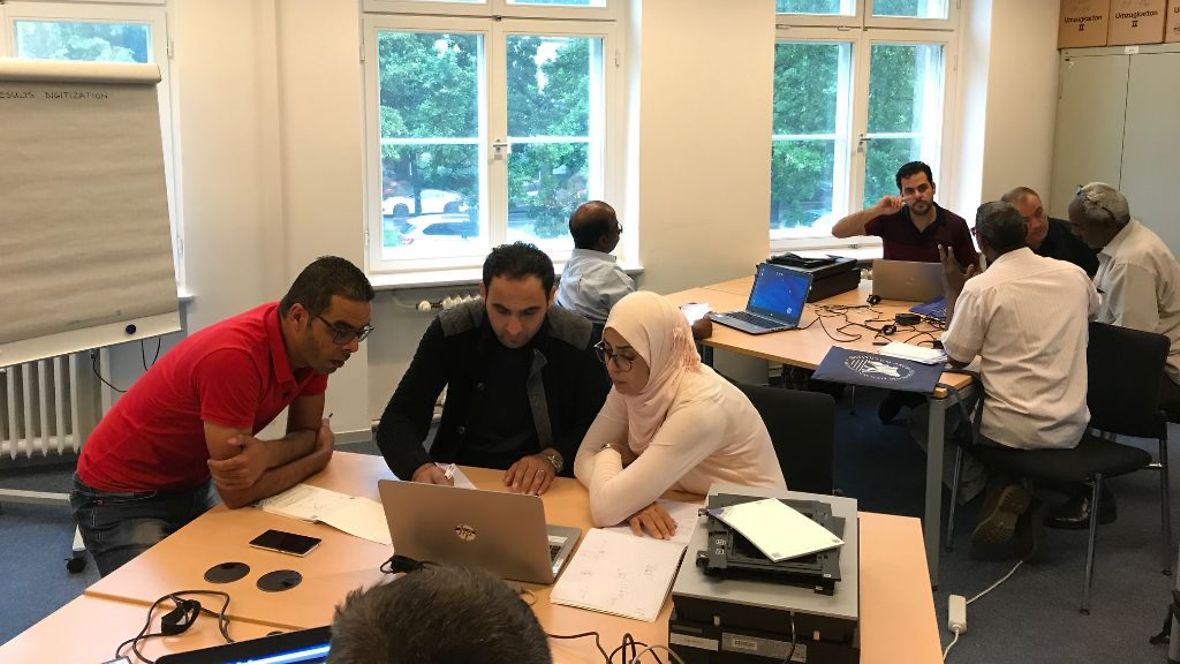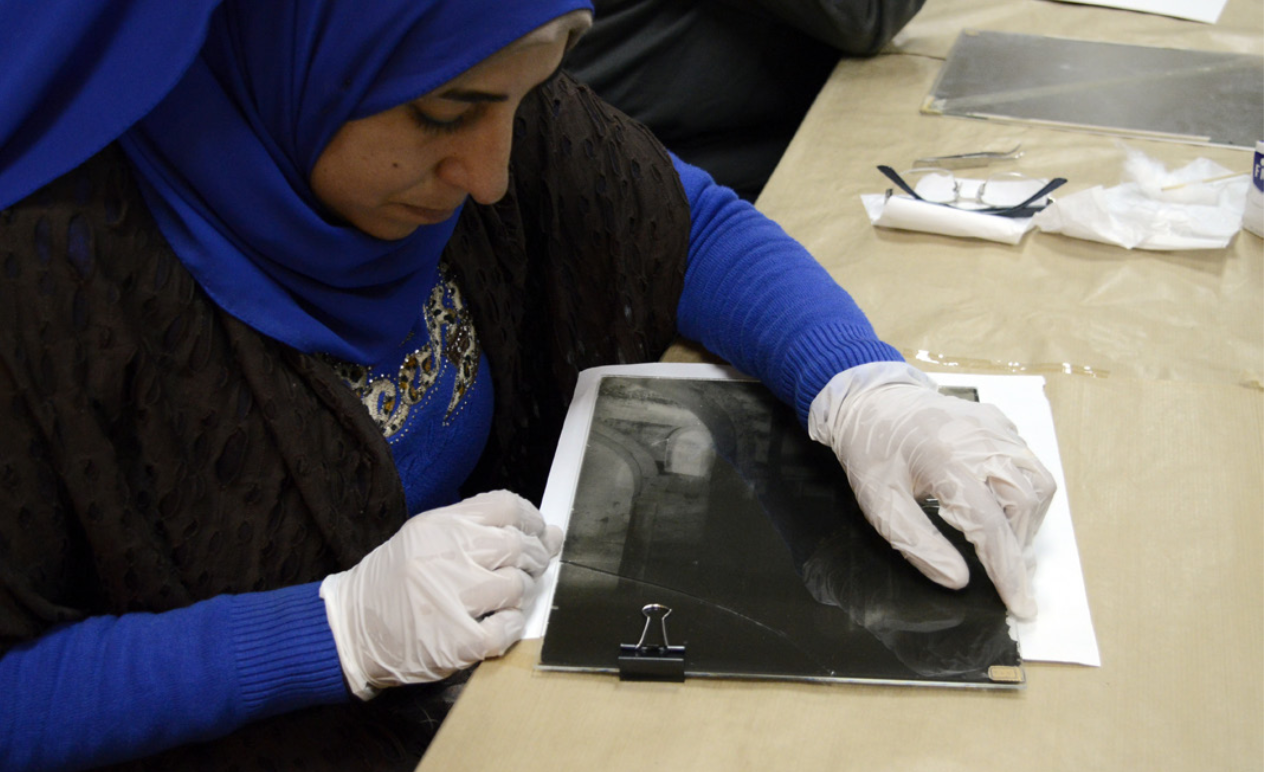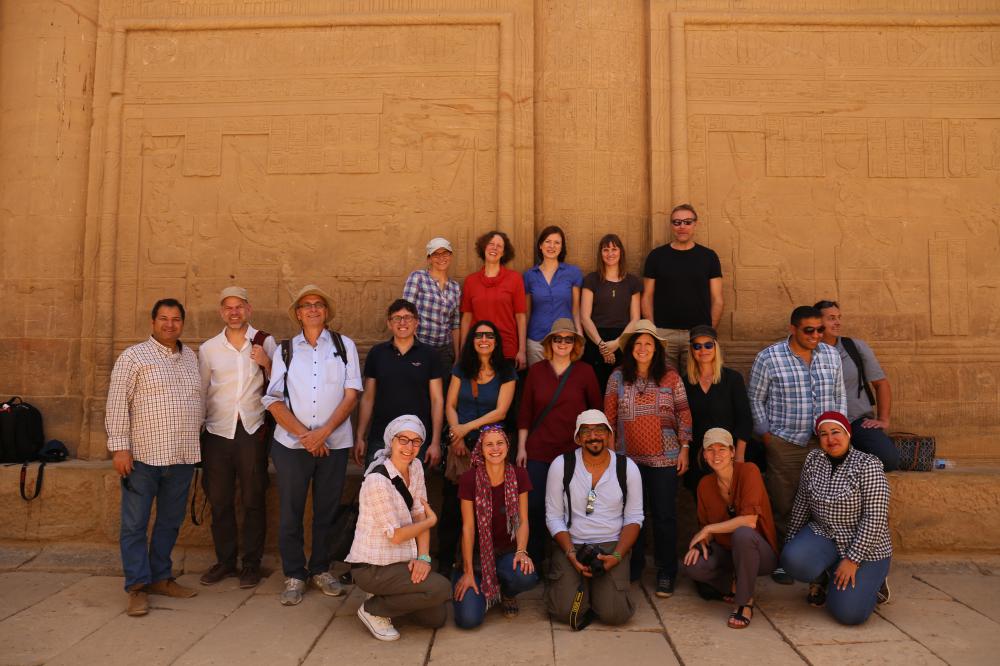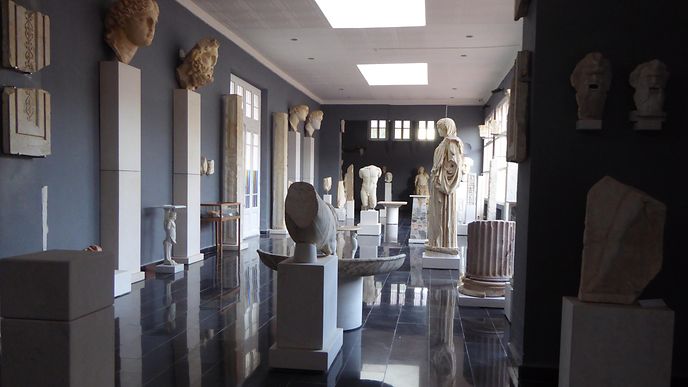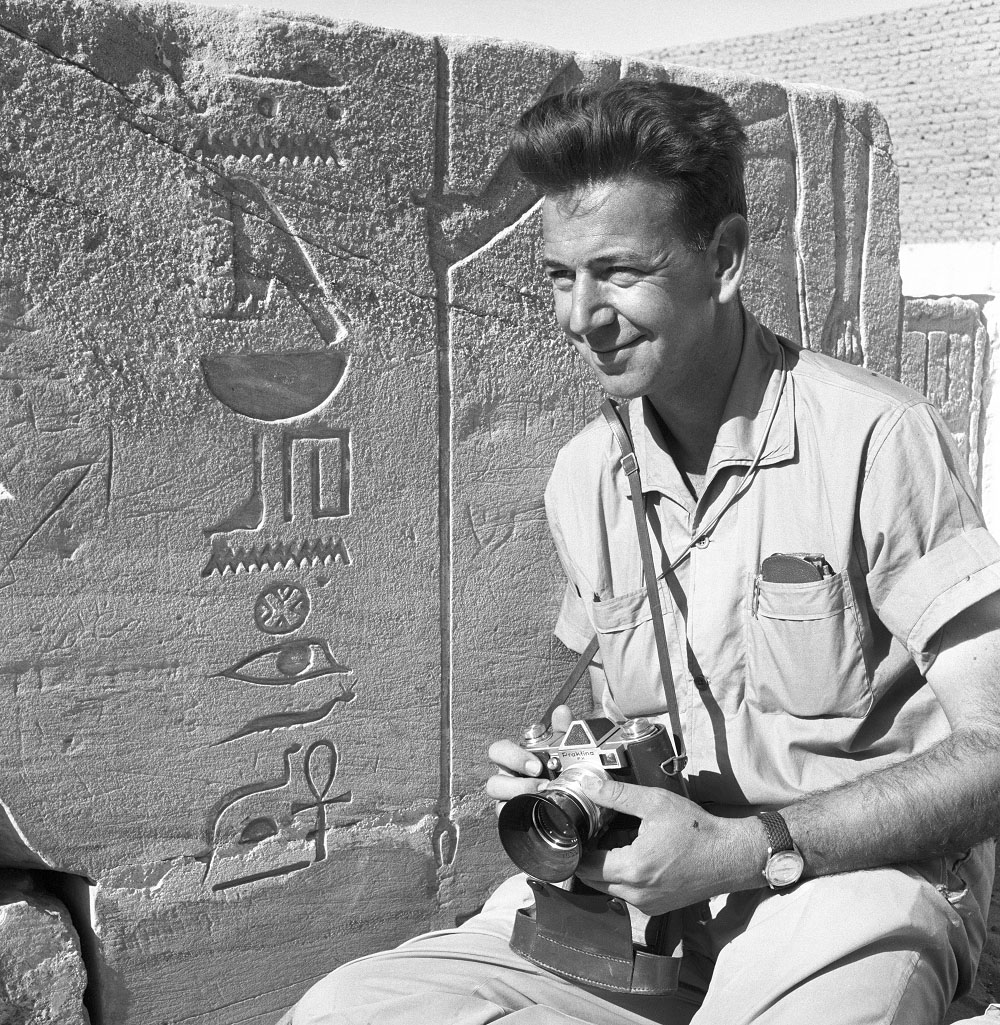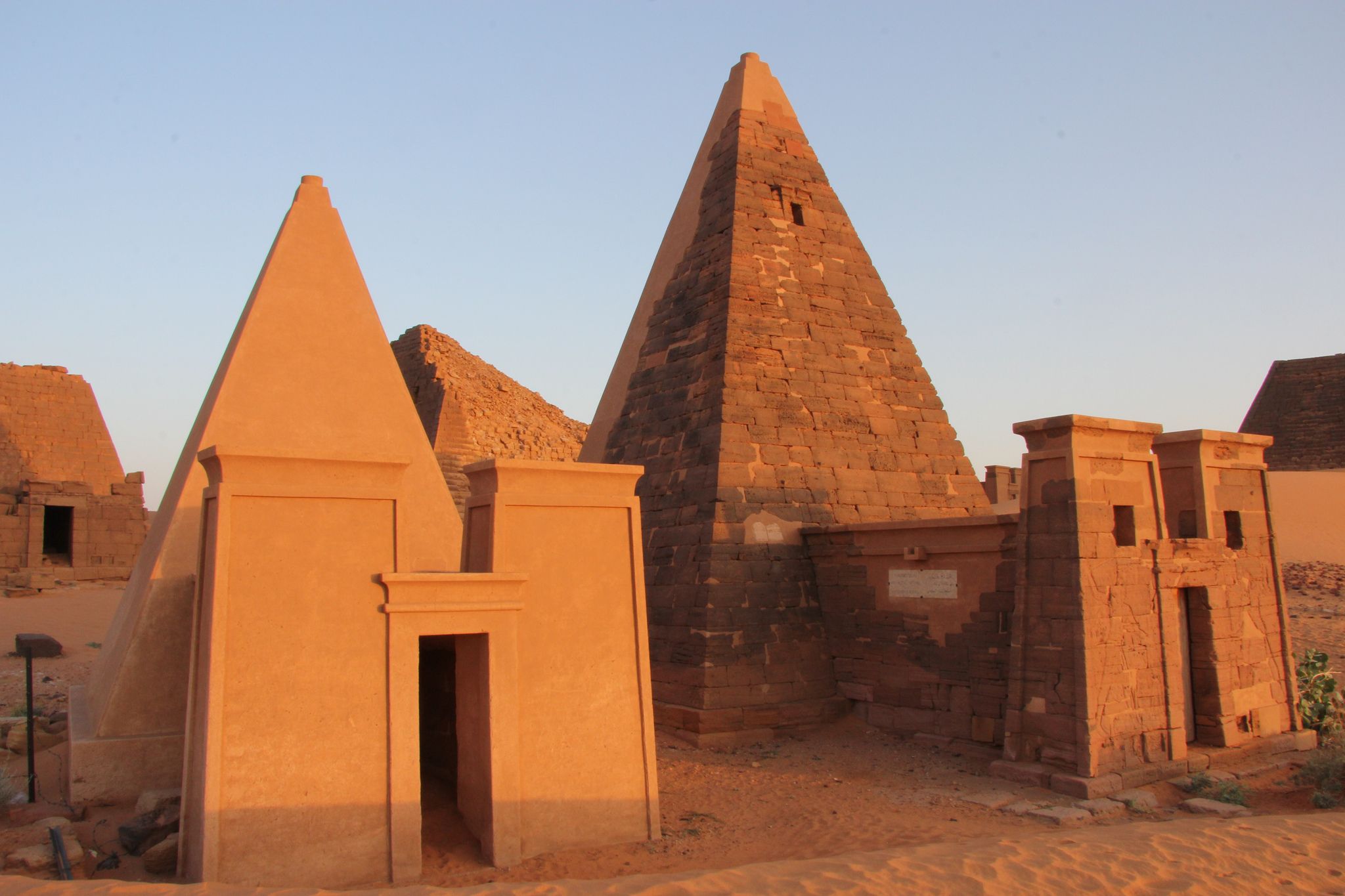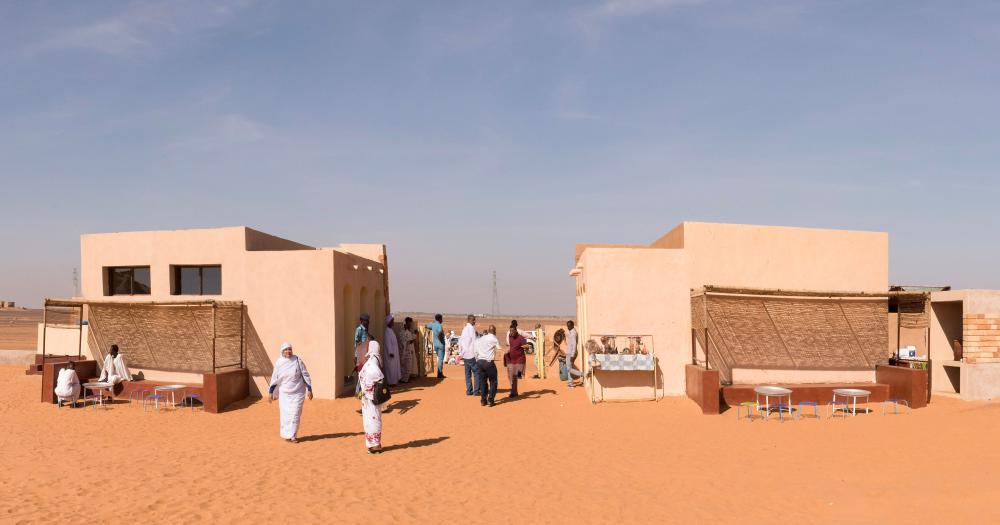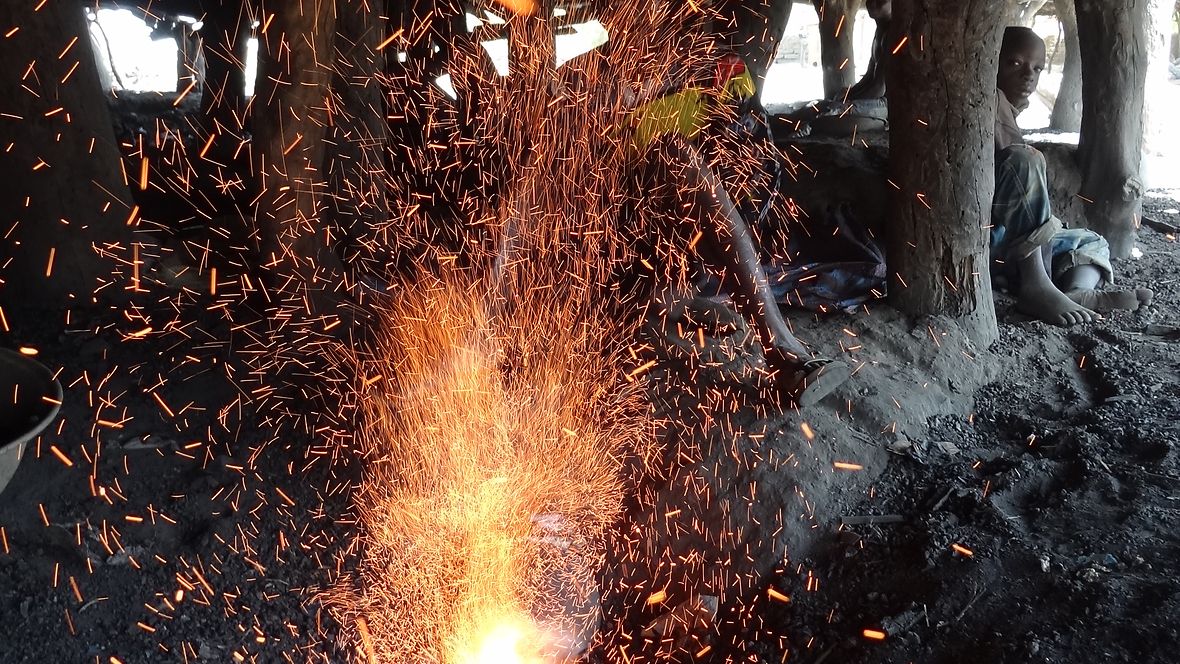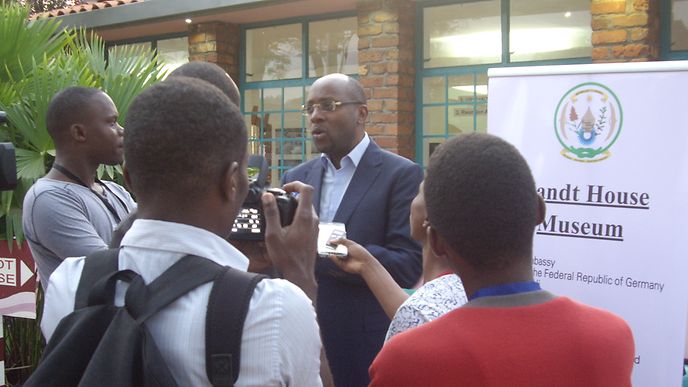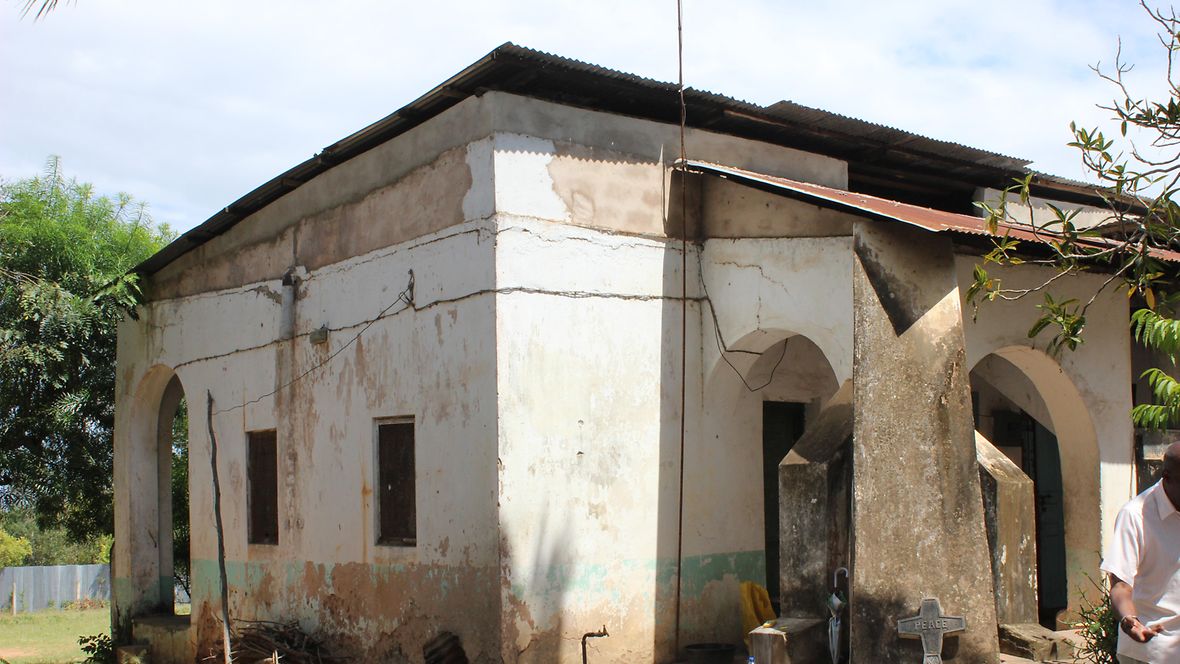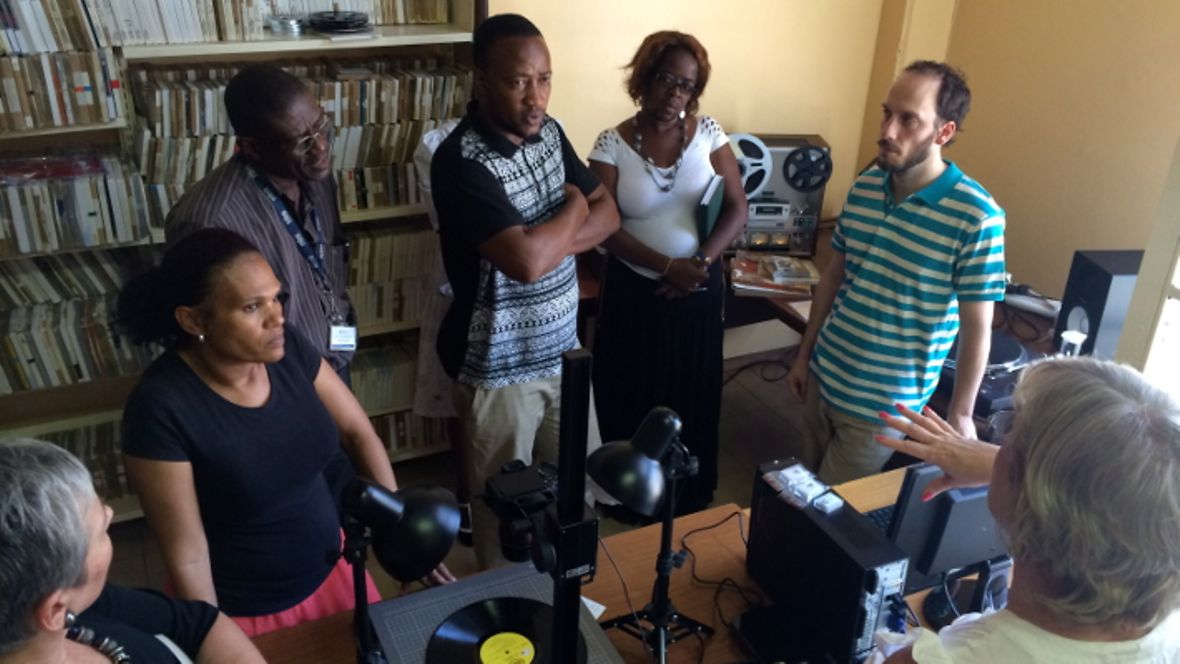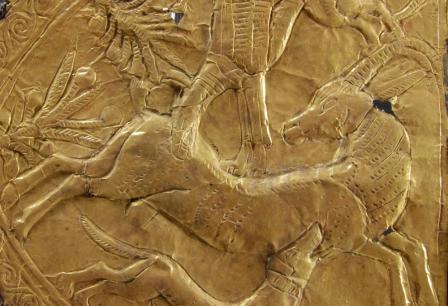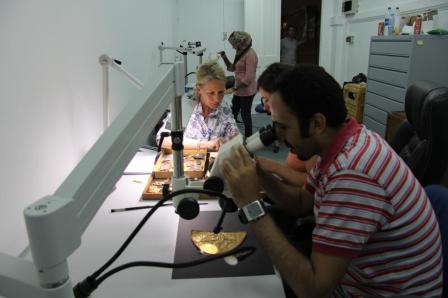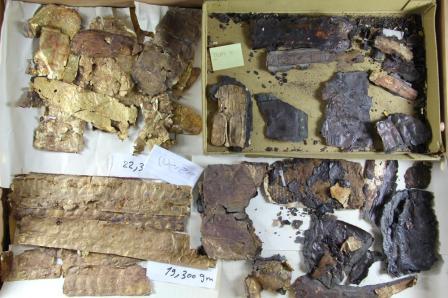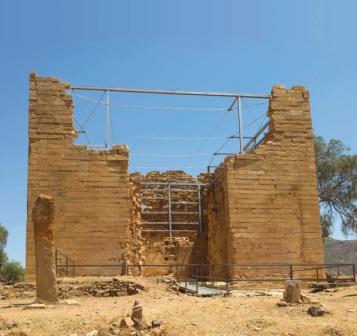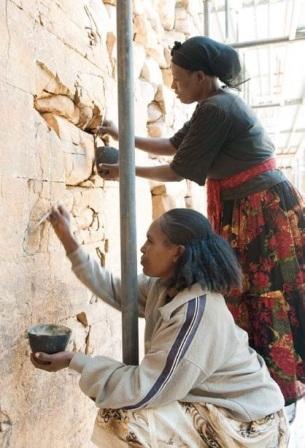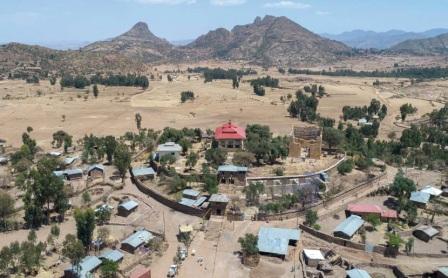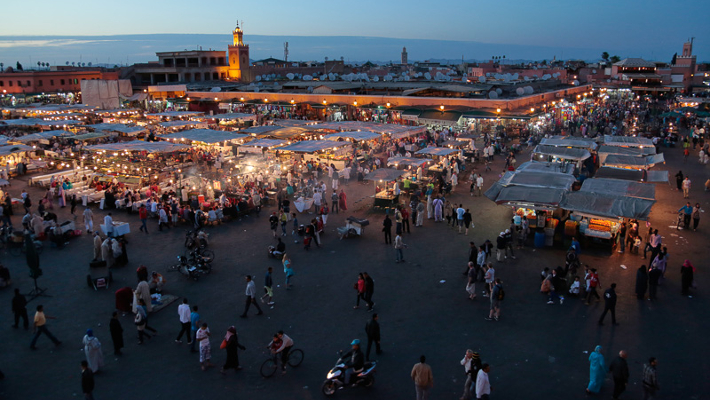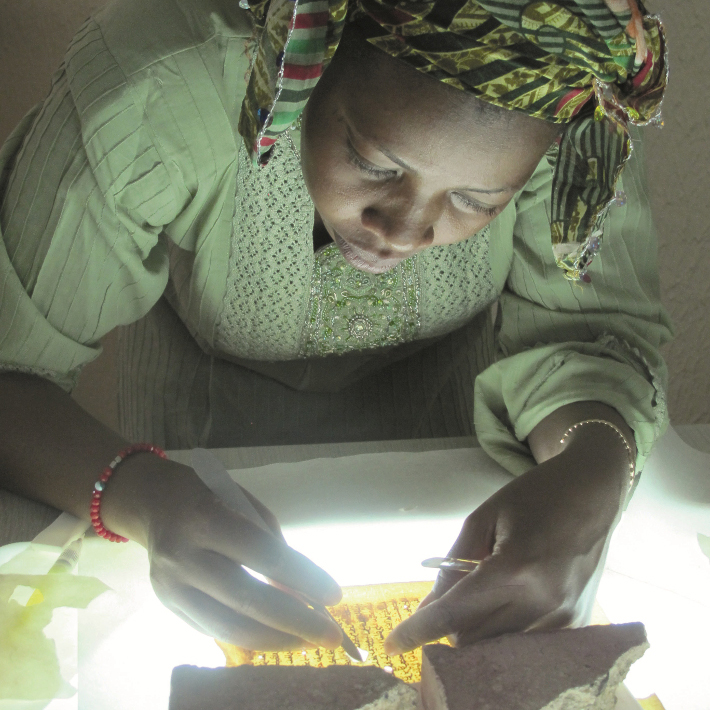The German Archaeological Institute has been involved in refurbishing the National Museum of Cherchell (Algeria) since 2008 using funding from the Cultural Preservation Programme of the Federal Foreign Office. Around two millennia ago, the ancient port of Caesarea Mauretaniae was the seat of the kings of Mauritania for 65 years. The National Museum of Cherchell houses finds of the highest quality from the city’s unparalleled heyday and from the following centuries under Roman rule.
Africa
Redesign of the Kandt House in Kigali (Rwanda)
Constructed in 1907, the house is the last remaining architectural testimony to the German colonial era in Kigali. It was named after the first German Imperial Resident, Richard Kandt. Located on Nyarugenge Hill, the centre of today’s Rwandan capital, it offers a unique view of the countryside surrounding Kigali. The newly designed building is the first museum in Rwanda to address the country’s history during the German colonial administration and its influence on the Rwandan population.
Museum for the Cultural Heritage of Heliopolis (Egypt)
The largest of the Egyptian pharaohs’ temples, the sun temple of Heliopolis, lies at the heart of pulsating everyday life in the megacity Cairo. Its survival is under threat from informal construction, rising groundwater levels and emerging rubbish dumps. The open-air museum devoted to the archaeological site Heliopolis with its temples, houses and graves, the result of an initiative by the Egyptian Ministry of Antiquities, is something of an island in the middle of Matariya district. With funding from the Cultural Preservation Programme of the Federal Foreign Office, a protective roof is to be erected over the museum so that the most recently found, environmentally sensitive treasures of Ancient Egyptian art can be presented to the local population and visitors.
Digital Cultural Heritage Register (Sudan)
As part of the Cultural Preservation Program of the German Federal Foreign Office, the German Archaeological Institute (DAI) conducts training courses within the National Corporation for Antiquities and Museums (NCAM). Additionally a digital register for the archaeological sites and monuments of Sudan is being developed since 2017.
Sudan has a rich archaeological heritage, including large monumental buildings such as pyramids, temples and fortifications. Although archaeological excavations and research projects have been carried out in Sudan since the 19th century, the country has no digital register of its archaeological sites and monuments. This increasingly creates problems for NCAM and the international research community. To protect and explore archaeological sites and important monuments the registration and identification of cultural heritage is essential.
Therefore, trainings were conceptualized and the work on the digital register began. In addition to practical, technical and theoretical foundations, pragmatic approaches of curating analogue and digital data are in focus. Corresponding to local requirements the approach is implemented and applied with the accompanying development of an associated database. The basis of the digital register is formed by data compiled by the digitized archive of Friedrich W. Hinkel. The data is based on 14,000 archaeological sites in Sudan.
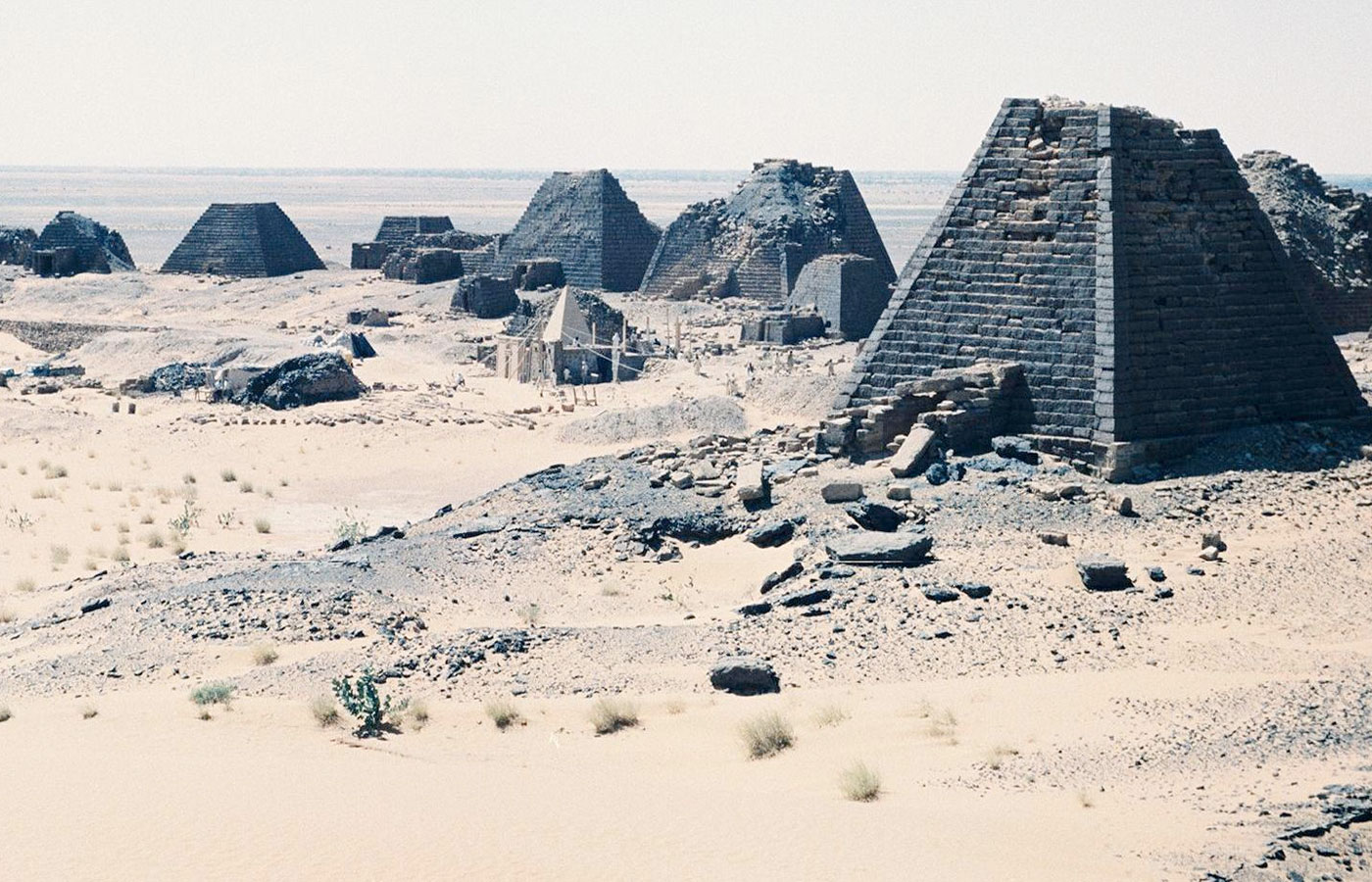
Digital Cultural Heritage – A Sudanese-German Endeavor
In July 2017 a three-week summer school in Berlin was conducted. Representatives of the NCAM, as well as participants from Tunisia and Palestine attended the program. The basic structure of the register, digitization techniques and the curation of data were discussed during workshops. Finally, the participants developed a plan for the realization of a digital register for the cultural heritage sites of Sudan. In autumn 2017, a two-week stay of DAI employees in Khartoum followed. During their stay the first stages of the jointly developed plan were implemented. Together with their Sudanese colleagues the DAI employees sorted and registered analogue data and in the process set up an archive at NCAM. The development and programming of the digital heritage register for Sudan will be conducted in 2018.
The data collection and digital heritage registers are a relevant issues for the entire North African and Arab region. Therefore, the cooperation was extended to interested antiquity services of other member states of the Arab League.
Promoted by: Cultural Preservation Programme of The Federal Foreign Office
Source: Ed. Federal Foreign Office
Image: Workshop for digitalization | © DAI
Read More:
Restoring Glass Negatives in the Center of Documentation in Cairo (Egypt)
Egypt comprises ca. 14,000 objects, mainly silver gelatine glass negatives and acetate sheet film negatives. Since 2002 the German Archaeological Institute Cairo is involved in a restauration and training program. The project aims at helping to secure, safely store, and conserve the glass negatives and at training of local inspectors in order to create local conservation and restauration capacities. The restoration program is supported by the German Foreign Ministry.
The Photographic Archive of the Comité de Conservation des Monuments de l’Art Arabe at the Citadel in Cairo contains approximately 14,000 photographs. The objects are mainly silver gelatine glass negatives dating into the first half of the 20th century. Only a small part of the archive consists of acetate sheet film negatives and albumen photographs, which were used in the 19th century. To this day the images, showing antiquities, monuments and ancient cities, have not lost any of their fascinating appeal. To store the glass negatives, special wood cabinets were made, presumably 1931. The glass negatives were stored in the boxes in upright position. The improper handling and storage of the panels led to significant damage and contamination such as breaking, silver-mirroring, bacterial attack and insect infestation.
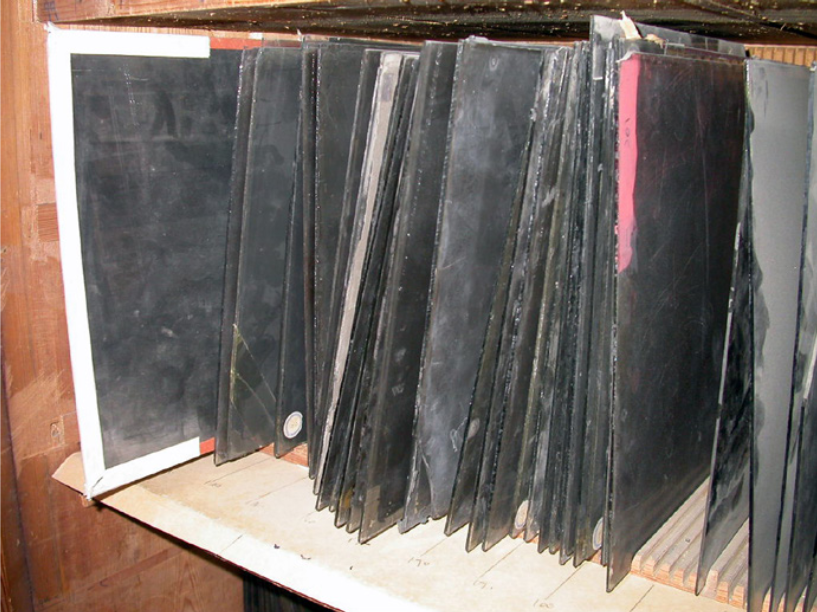
The Restoration of the Glass Negatives
Between October 2002 and October 2003, the German Archaeological Institute Cairo carried out the first restoration phase. The glass panels were taken from the wooden cabinets and stored in envelopes and boxes especially suited for archiving photographs. The new material was imported from Germany. During the process the existing numbers on the glass plates were compared with the remaining registry book of the Comité and corrected if necessary. The boxes are stored today in newly purchased metal cabinets. However, due to difficulties on-site and significant damage to the panels, further work is needed.
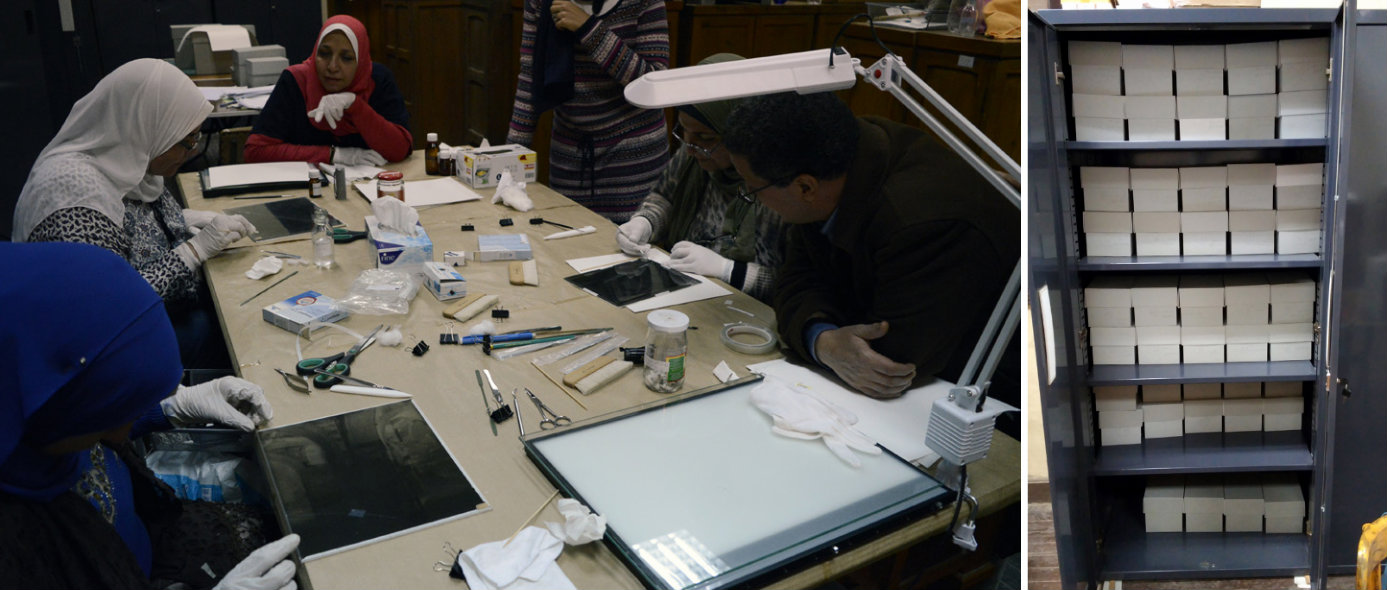
Trainingprogram in Egypt
In order to complete the restoration of the glass negatives, a second restoration phase was carried out in 2015/2016. The major focus was on the practical training in restoration of the inspectors. After completing the final phase, the team of the citadel is now able to restore almost all the state images on the glass negatives independently. With the restoration of the glass negatives and the training of the inspectors on the citadel, a first step has now been taken. With the help of the trained staff of the Center of Documentation, this important restoration project can now be completed in near future.
Cooperation: Ministry of State for Antiquities Affairs/ Egypt, Center of Documentation, Citadel; Institut Francais d‘Archéologie Orientale du Caire.
Funding: German Foreign Ministry
Project Coordination: Wolfgang Mayer.
Team: N. Ahmed, K. Aue, K. Bartels, S. Falk, S. Heckert
Read more
E-Research report of the German Archaeological Insitute (GER)
Photographic Archive Projects in Sudan


Meeting of the TransArea Network Africa – Excavation and Conservation Projects (Egypt)
The TransArea Network Africa meets again for network strengthening and capacity building. During the meeting in April TANA members presented their work. Among otherst the important work of a rescue project, conducted to protect the temple complex of Philae from flooding, was demonstrated on-site.
The TransArea Network Africa (TANA) was founded in 2014 with the intention to not only connect the individual DAI projects located within Africa but to overall strengthen the field of Archaeology on the African continent. Since initiation, regular meetings have taken place in order to ensure a successful implementation. This year, TANA met in Aswan, Egypt.
Day one of the meeting kicked off with presentations taking place in the very fascinating Nubian Museum. After a brief welcoming, Egyptian colleagues and TANA members had the opportunity to introduce their projects. A simultaneous interpreter translated the presentations from English to Arabic and thus enabled the participation of the local population.
Day two and three focused on the regional archaeology. A field trip to the temple complex of Philae demonstrated the remarkable work of a rescue project conducted in order to preserve the Temple of Isis and others from the flooding of the island. As presented by the Egyptian colleague, Shamiaa Magdy Eid, the temple complex of Philae was only one of many to be disassembled and re-erected due to the building of the Aswan High Dam. The remains of early rescue measures, indicating the original site of the temple, are still visible and can be seen not far from the new location. The day was rounded off by a tour of the excavations of the Elephantine. After giving an overview of the history of the Elephantine and its excavations, Johanna Sigl of the DAI Cairo Department passionately introduced her current project “Realities of Life” which focusses on the actual life conditions of the settlement during the Middle Kingdom.
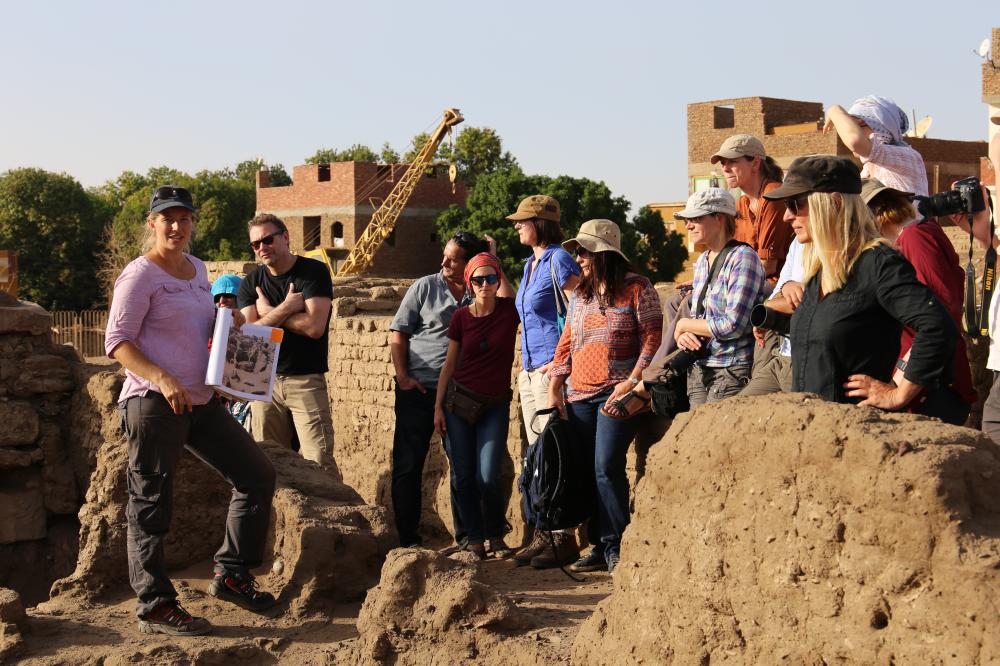
The excursions on day three led the group to Gebel Silsila West where the directing Egyptian archaeologist, Ahmed Said, gave the TANA members an exclusive tour of the shrine and quarry. The group subsequently visited Edfu. The director of the DAI Cairo Department, Stephan Seidlmayer, provided insight into the significance and context of the temple.
The Aswan Meeting also marked a very important milestone within our e-learning project (MOOCs). After a long time of preliminary work, mostly conducted by Sofia Fonseca, we recorded some interviews of TANA members and are now looking forward to uploading the first contributions.
Thanks to the joint effort between the DAI Berlin Head Office, DAI KAAK, DAI Cairo Department, and our Egyptian partners from the Nubian Museum in Aswan and the Ministry of Antiquities of Egypt, TANA was able to host a successful meeting and ambitiously looks towards the future in which TANA continues moving forward towards the implementation of its goals.
Image: TANA-Group at Philae | © DAI.
Source: DAI Press release
Restoration of the National Museum in Cherchell (Algeria)
The German Archaeological Institute (DAI) has been involved in refurbishing the National Archaeological Museum in Cherchell since 2008 using funding from the Cultural Preservation Programme of the Federal Foreign Office.
As the seat of the Kings of Mauritania and the provincial capital in Roman times, Cherchell was home to flourishing culture stretching into the late Antique period. This cultural heyday is reflected in the impressive buildings and lavish embellishments dotted around the city in the form of magnificent statues and colourful mosaics. The museum, a listed building which opened in the early 20th century, was given the title of National Museum by the Algerian Culture Ministry in 2009. It is well known for the high artistic quality of its collection of some 400 sculptures dating back to the Monarchy and Roman Imperial era, a collection which is unique in northern Africa.
The German Archaeological Institute has been involved in work on the museum since 2008 using funding from the Cultural Preservation Programme of the Federal Foreign Office.
The aim is to complete the museum’s permanent exhibition. Alongside work to restore mosaics and sculptures together with Algerian staff, displays for the sculptures which were damaged during earthquakes in the 1980s have now been made earthquake-proof. The project is at the same time designed to heighten the local population’s interest in the museum significantly but also to increase the number of people visiting the museum itself and the museum website.
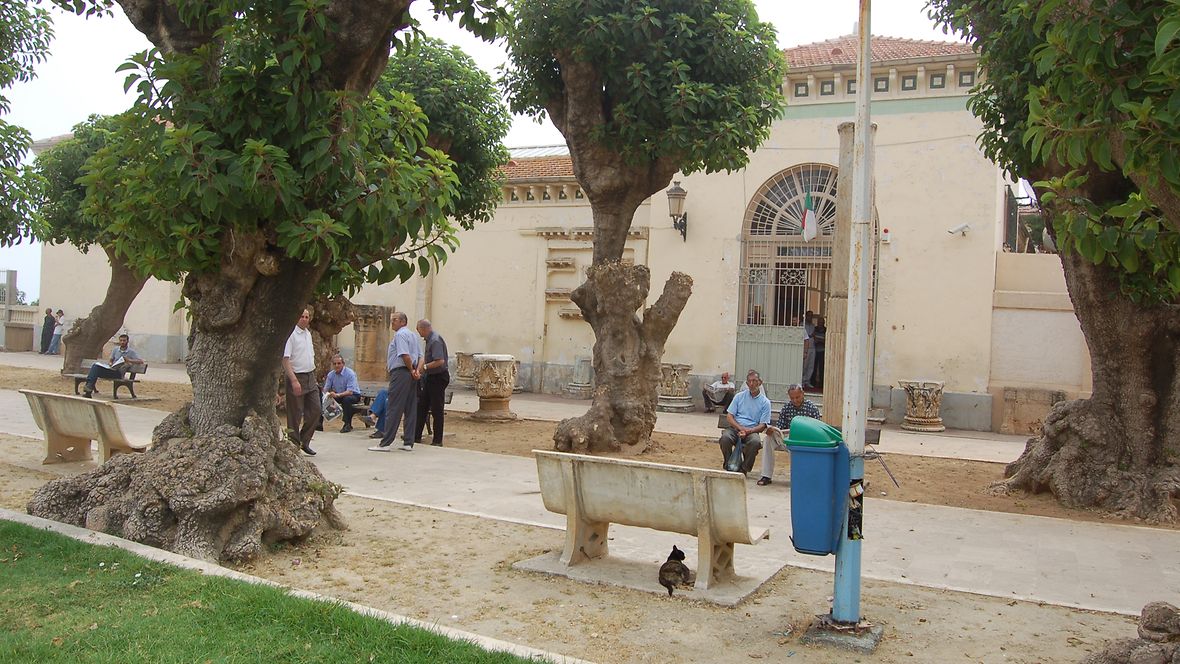
Following a decision taken jointly with the museum, the signs in the individual rooms as well as on all the exhibits are now in both French and Arabic. Other languages are to be available using QR codes. The educational concept was drawn up giving due consideration to the interests of the local population. Alongside the classic exhibition concept, the museum is to be open to virtual visitors via the internet.
Alongside basic and further training for regional specialists in statue restoration and display, the museum’s educational concept was also enhanced. As a result, the level of competence has increased both regarding the exhibits themselves and their historical and cultural importance as part of Algeria’s culture heritage.
The project is being implemented in close cooperation between the Cherchell National Archaeological Museum, the Ministry of Culture in Algiers and the Roman Department of the German Archaeological Institute.
Promoted by: Cultural Preservation Programme of The Federal Foreign Office
Source: Ed. Federal Foreign Office
Image: The refurbished Museum Gallery | © DAI, Ulla Kreilinger.
The Digital Archive of Friedrich W. Hinkel (Sudan)
The archive of Friedrich W. Hinkel represents one of the largest collections of research materials concerning the archaeology of the Ancient Sudan. Thousands of photographs, slides, maps and drawings are the invaluable legacy, documenting the cultural heritage of Sudan.
It is the result of Dr. Hinkel’s (1925 – 2007) over 40 years of continued research, beginning with his participation in the Humboldt University’s excavation at Musawwarat es Sufra in 1961. From 1962 onwards he was deputized by the Academy of Sciences of GDR to the Sudan’s Archaeological Service, for which he worked as an architect focusing on the excavation, reconstruction and conservation of archaeological monuments. Among his greatest achievements are the dismantling and recovery of the of Semna, Kumma, Buhen and Aksha threatened by the Great Dam, the excavation of temple M 250 at Meroe as well as his conservation efforts regarding the pyramids at Meroe.
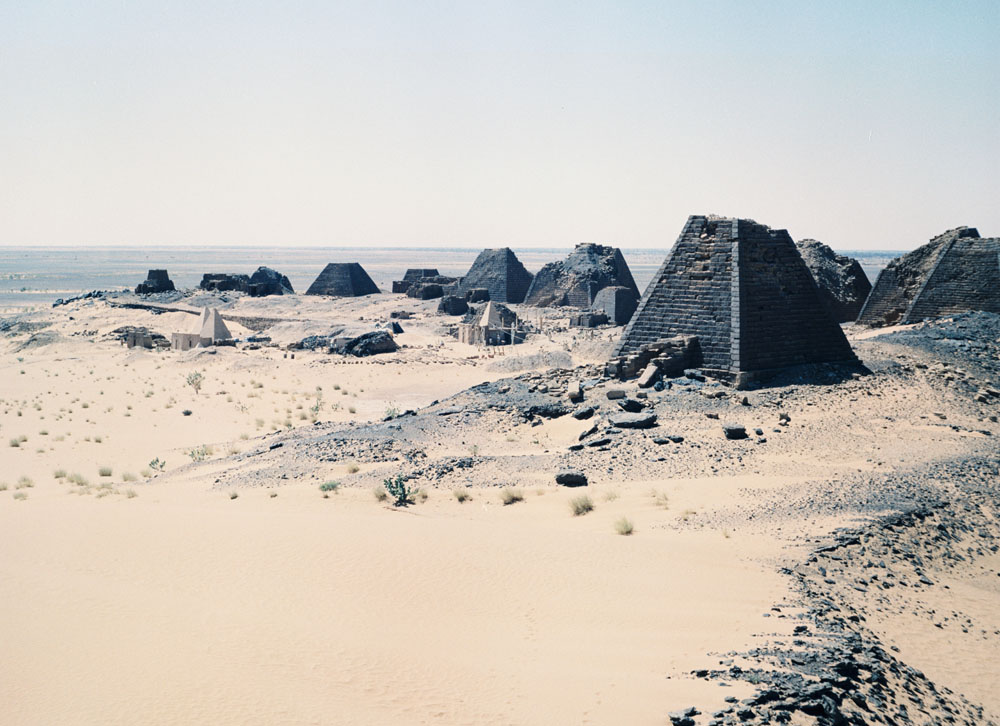
Mapping Sudan’s national treasures
In the course of his work Friedrich W. Hinkel collected information concerning thousands of archaeological sites in the Sudan, which he planned to publish in geographical order in the form of a publication series called “The Archaeological Map of the Sudan“ (AMS). Due to his work for the Sudan Antiquities Service (now the National Corporation for Antiquities & Museums) he had access to documents and sites previously unknown to other international scholars, making his archive a comprehensive collection of research.
The geographical structure of the “The Archaeological Map of the Sudan“ – and therefore large parts of his archive – is based on a grid system he encountered at the Sudan Antiquities Service and later enhanced using the International Map of the World. Within Hinkel’s AMS-system every site is assigned an alphanumerical code (the so called AMS-number), by which the location of the site can be identified up to an area of about 5 by 5 km. (see also: AMS)
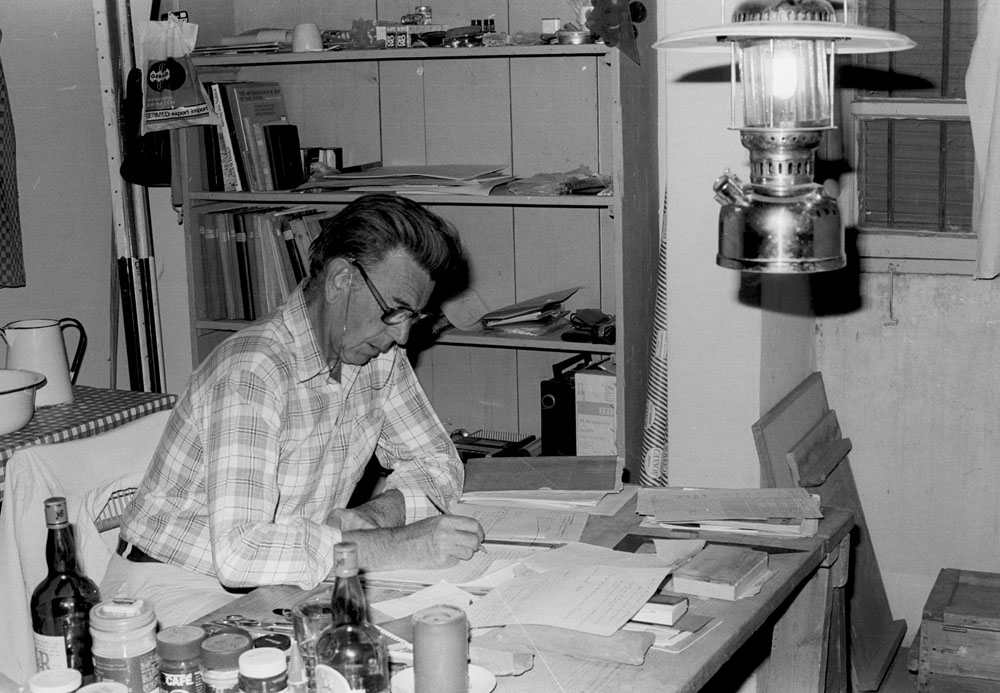
Publishing to Preserve
During his lifetime Dr. Hinkel published three volumes of the AMS (a guide as well as two volumes regarding The South Lybian Desert and The Area of the Red Sea Coast and Northern Ethiopian Frontier) as well as several supplement volumes focusing on single contexts. The lion’s share of his documents, however, remains unpublished.
His archive contains over 30.000 photographs, over 10.000 slides, about 540 topographical maps, over 4.000 drawings, over 20.000 index cards as well as several hundred folders containing geographically structured information on archaeological sites.
Owing to the generous support of the Qatar Sudan Archaeological Project (09/2014 until 03/2016) and the German Foreign Ministry (beginning in 04/2016) it was possible to digitize large part of Friedrich W. Hinkel’s research Archive and make it accessible via the iDAI.world in cooperation with the CoDArchLab and the National Corporation for Antiquities & Museums in Khartoum.
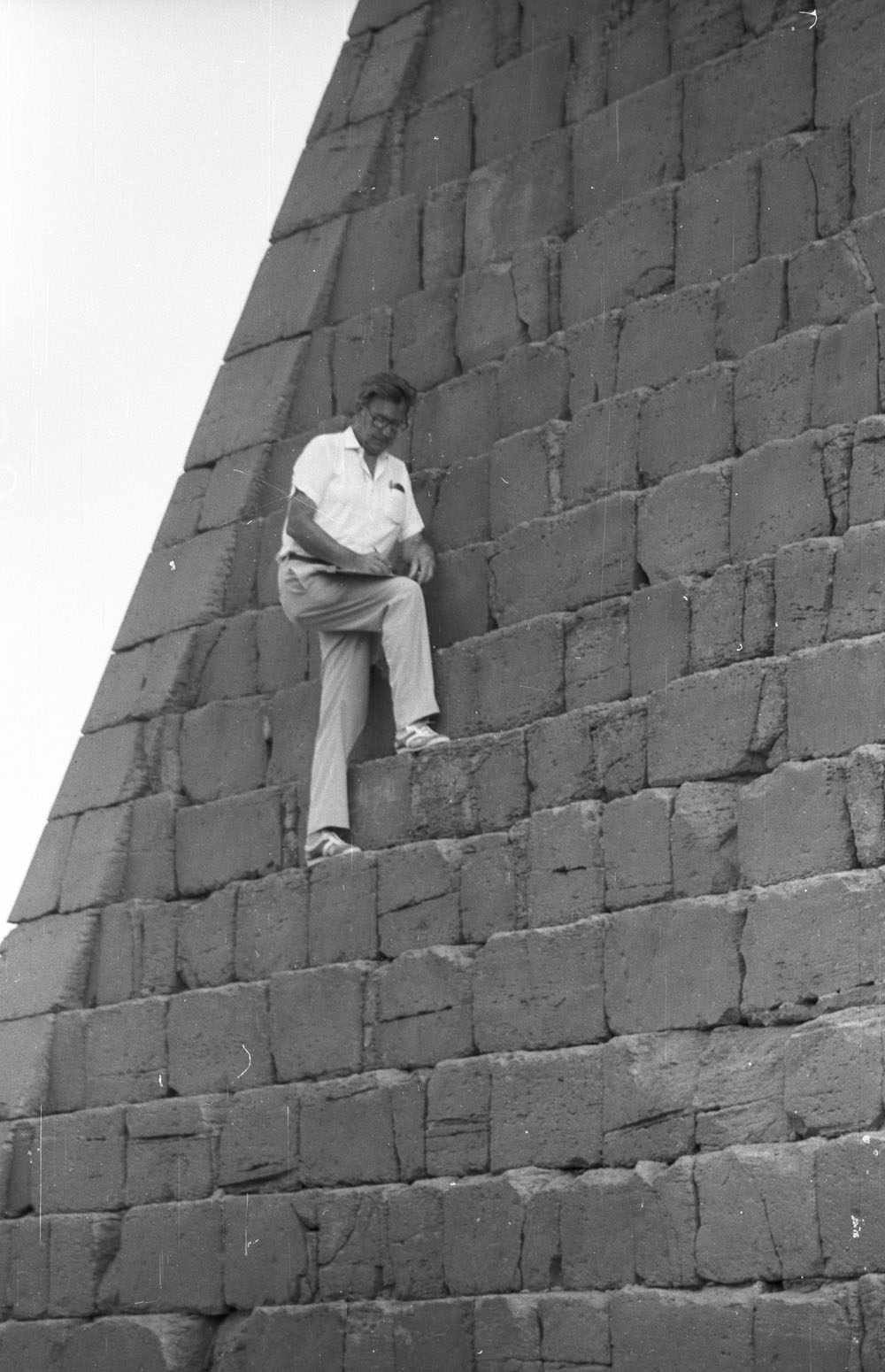
Read more: New Exhibition “Pyramids of Meroe” (Sudan)
Source: German Archaeological Institute
Image: Dr. Friedrich Hinkel | © DAI
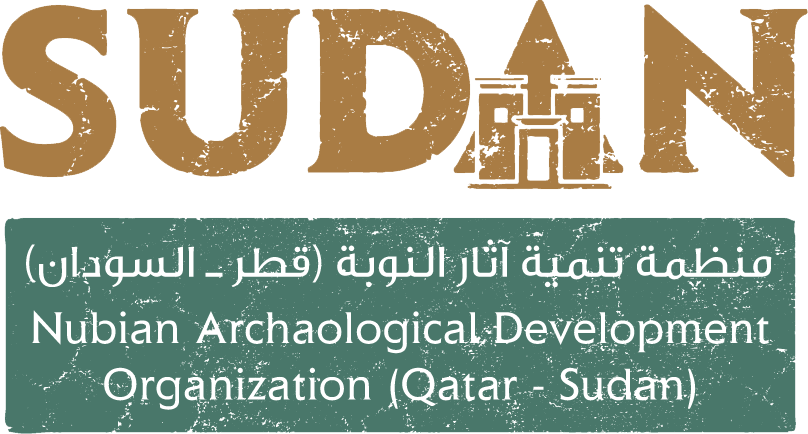
New Exhibition “Pyramids of Meroe” (Sudan)
Inauguration of the renewed entrance to the royal cemetery in Sudan with a the new exhibition “Pyramids of Meroe”.
26th January the renewed and enlarged entrance to the royal cemeteries at Meroe/Begrawiya was inaugurated with the exhibition “The Pyramids of Meroe”. A new showroom with interpretive panels was opened to the public and is now welcoming tourists informing them about the ancient necropolis and its famous pyramids. The enhancement of the visitor entrance is an important achievement for this famous site and part of a large scale development project of the Qatari Mission for the Pyramids of Sudan (QMPS). The QMPS intends to holistically approach the installation of sustainable tourism and site management at the royal pyramids of Meroe together with all stakeholders including local communities not only to develop the site but also to learn more about the Sudanese ancient monuments and to conserve it for future generations.
The World Heritage Site of Meroe is one of the most important archaeological sites in the Sudan. Its remarkable cemeteries with more than 100 pyramids attract thousands of Sudanese and international tourists each year. Since the 1960ies, the ancient site is adversely affected by environmental conditions and increasing tourism. In particular, sand erosion caused by accumulated dunes threatens the monuments. In 2014, Qatar Museums launched the Qatari Mission for the Pyramids of Sudan to investigate and to preserve the pyramid cemeteries of Meroe and to develop the site.
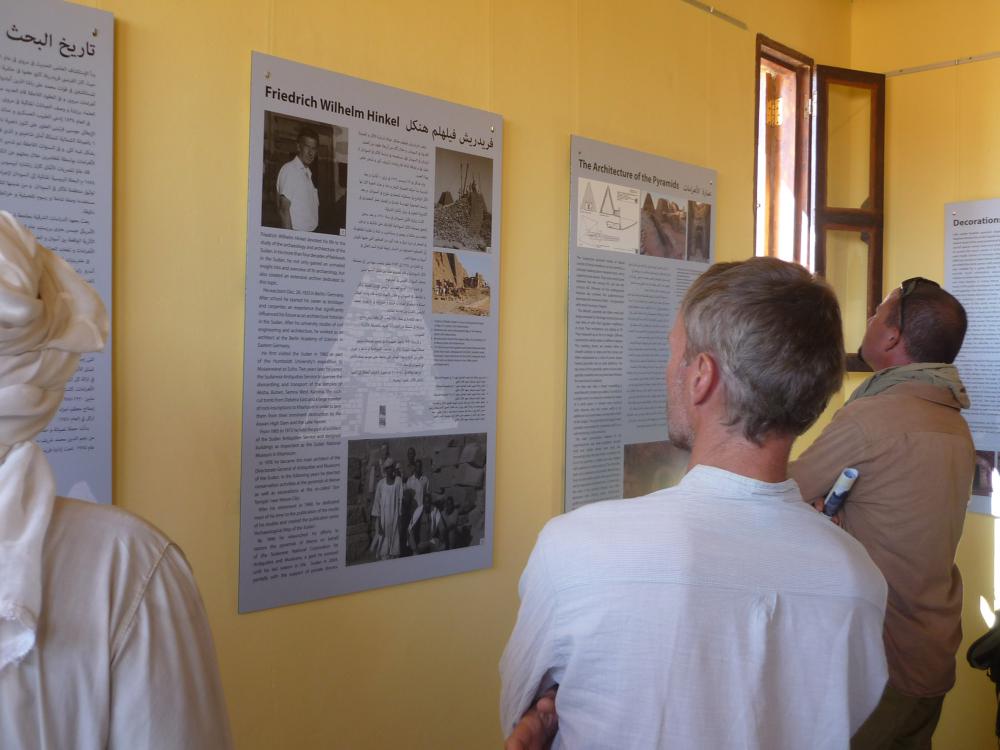
The project is embedded in the Qatar-Sudan Archaeological Project and closely cooperates with the Sudanese National Corporation for Antiquities and Museums and the German Archaeological Institute. The latter institute houses the Friedrich-Hinkel-Archive representing the most comprehensive archive of the archaeology and architecture of the Sudan. Friedrich Hinkel, a German architect, devoted almost 30 years of his life to the study and preservation of the pyramids at Meroe. The digitization and exploration of his archive’s holdings is another focus of the joint pyramid project and certainly an important basis for the Mission to continue his work to preserve the ancient Sudanese heritage at Meroe.
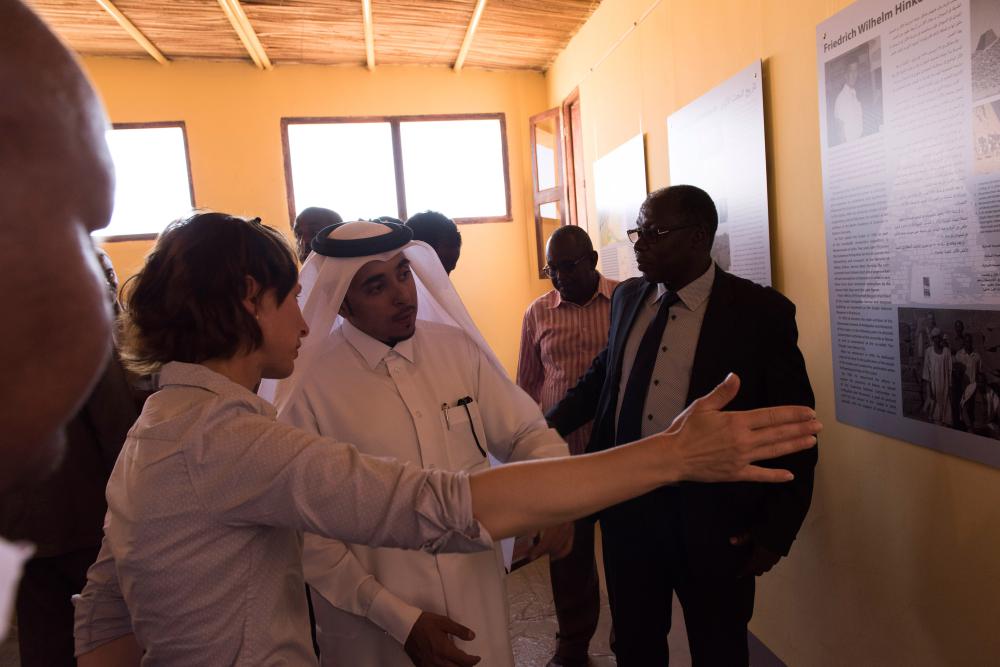
Source: Press release German Archaeological Institute
Image: Pyramids of Meroe | © flickr (CC-BY-SA-2.0).
The Two Headed Hammer project in Paradé and Ouri (Burkina Faso)
The Federal Foreign Office is supporting the preservation of traditional blacksmithing skills in the villages of Paradé and Ouri in rural Burkina Faso with funding from its Cultural Preservation Programme.
The aim of the Two Headed Hammer project is to preserve iron making and blacksmithing knowledge and skills in Burkina Faso and pass them on to future generations. Only a few elderly men still have these skills, which are at risk of dying out. If their expertise is not recorded soon, it is likely to be lost to future generations. The aim is to preserve this knowledge, which has always been handed down orally, for the future and make it available to coming generations. The project is being run in cooperation with the KulturFeuerStiftung, a German foundation that supports blacksmithing projects for children and young people, and its founder Andreas Rimkus, an artist and machinist.
A symposium on blacksmithing and wood craft was held in Paradé and Ouri at the start of the cultural preservation project. During the seminar, the participants learned about technology and skills, as well as living mythologies and legends, as recounted in the songs sung by blacksmiths while they work, and medicinal knowledge about fire and water for extinguishing fire.
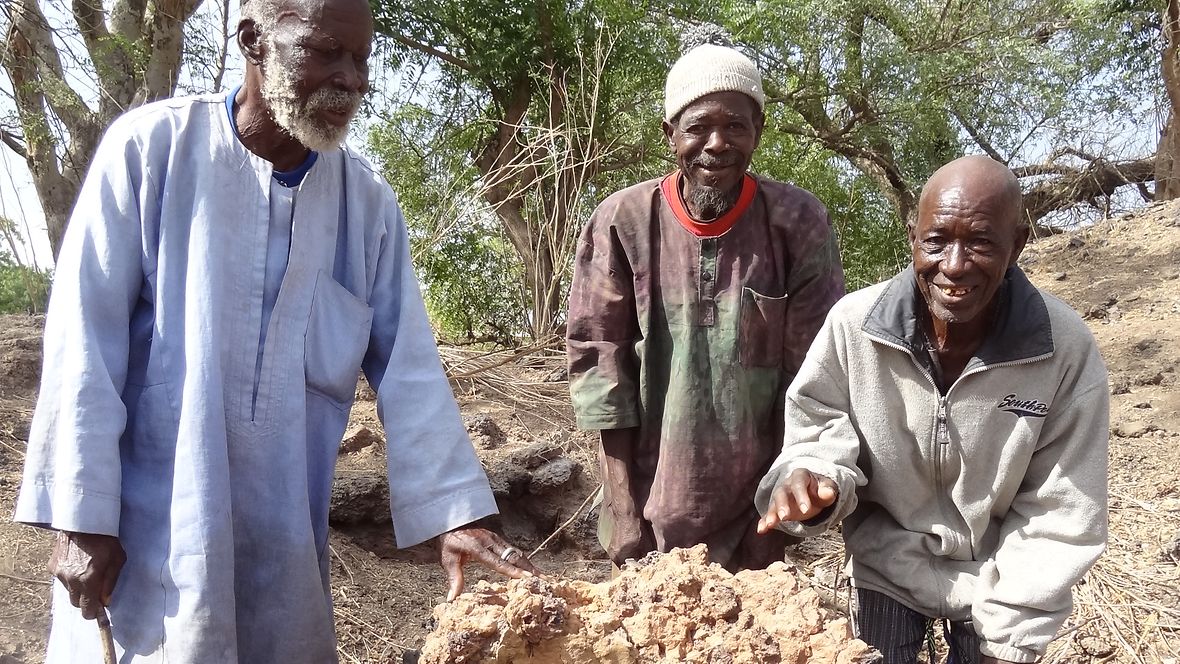
A small building made of clay is being built over a bloomery and will be used as a museum, office and exhibition space for the villagers and visitors. The museum will record blacksmithing knowledge and skills and create an infrastructure to enable the inhabitants of Paradé and Ouri to preserve their cultural heritage on their own. The two villages will thus become a focal point for anyone interested in the origins and traditions of blacksmithing, which date back centuries.
Villagers have been given computers, a solar power plant and a photo and video camera, thus enabling them to archive knowledge that has only been preserved orally to date. They can also use the equipment provided by the project to ask blacksmiths in other parts of the country questions, gather further knowledge and publish their own website. Responsibility for the project is shared with tribe members, villagers and local associations.
The Konate Family, one of the oldest blacksmithing families in Burkina Faso, is the local project partner. Decisions are made by working closely with the chiefs of the two villages. Further information on the project is available here (in German).
Promoted by: Cultural Preservation Programme of The Federal Foreign Office
Source: Ed. Federal Foreign
Image: The cultural preservation project preserves the traditional blacksmithing skills of past centuries. © Andreas Rimkus
Conversion of the Kandt House Museum in Kigali (Rwanda)
The redesigned museum opened its doors to the public in time for Richard Kandt’s 150th birthday on 17 December 2017. Constructed in 1908, it is the last remaining architectural testimony to the German colonial era in Kigali.
The building of the redesigned museum was the residence of the “first German inhabitant” and founder of the Rwandan capital, Richard Kandt. The Kandt House Museum in the Rwandan capital Kigali showcases the history of Rwanda under the German colonial administration.
With the support of the Cultural Preservation Programme of the Federal Foreign Office, the conceptual conversion of the Kandt House into a museum on the history of Rwanda at the beginning of the 20th century was facilitated by the partnership association Partnerschaftsverein Rheinland-Pfalz/Ruanda e.V. in cooperation with the Institute of National Museums in Rwanda (INMR). After the building had already been spared demolition in 2003 with funds from the Federal Government and Land Rhineland-Palatinate, the cultural preservation funding was used to support a (photo) exhibition consisting of historical (photographic) material, as well as to equip the exhibition space with display cases, audio stations, light installations and information boards. The natural history exhibition previously on display here was relocated to the Museum of Environment in Karongi and the Kandt House and its external facilities were renovated. In addition to the establishment of a library and media room as well as the development and implementation of an audio-visual concept, a roofed museum café was built in the external area.
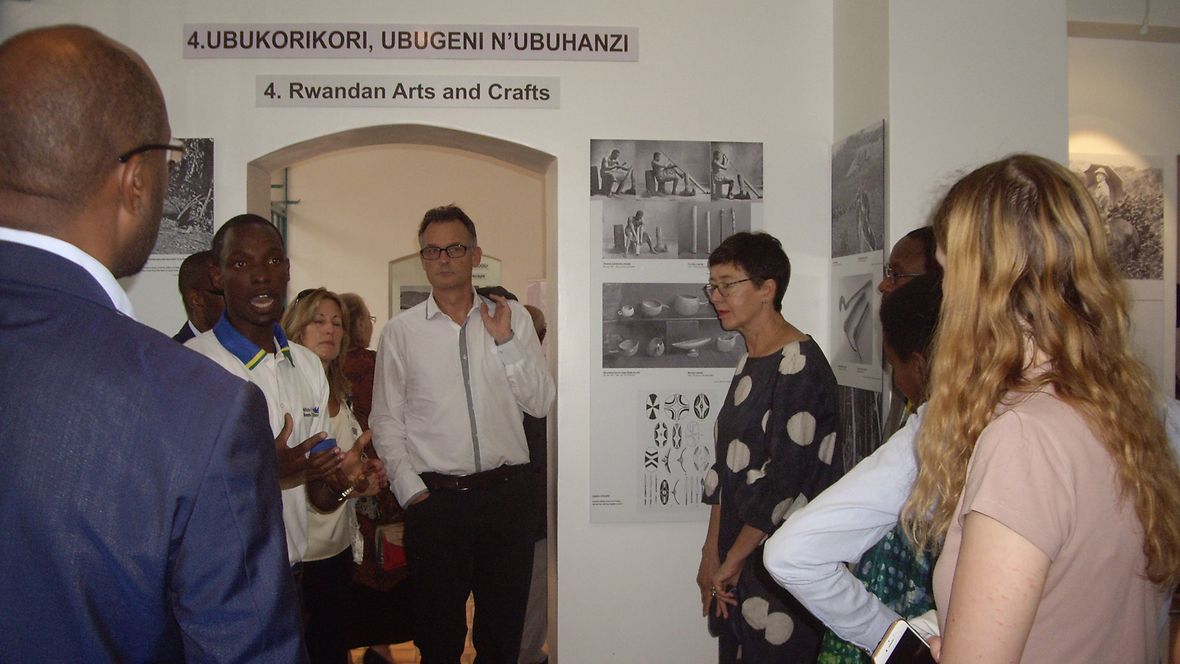
Following the redesign work, the museum now offers insights into traditions and life in Rwanda around the year 1900 and uses photos and other material to shed light on the impact of the colonial period on the population and the present day. The life and times of Richard Kandt, the Berlin Conference, the rush to the colonies on the part of adventurers, researchers and explorers, interactions between Rwandan and German actors and impacts on power and social structures are presented in modular exhibition units. In addition to the technical preservation of the colonial building, the emphasis is on examining and presenting this common colonial history, which inseparably links Germany and Rwanda, in a modern way.
A German-Rwandan cooperative partnership
German and Rwandan historians, museologists, artists and film makers jointly developed the concept for transforming the Kandt House into a modern museum. The partnership with the Institute of National Museums in Rwanda (INMR) for redesigning the Kandt House is helping to strengthen the national identity of Rwandan civil society, which is still coming to grips with the genocide.
The project partners are diverse and include the Institute of National Museums in Rwanda (INMR), the Ministry of Sports and Culture (Minispoc), the Partnerschaftsverein Rheinland-Pfalz/Ruanda e.V. (Jumelage), the German Embassy in Kigali, the Goethe-Institut, the Natural History Museum Mainz and the Kwetu Film Institute.
Promoted by: Cultural Preservation Programme of The Federal Foreign Office
Source: Ed. Federal Foreign Office
Restoring the Rebmann missionary house in Rabai (Kenya)
Since March 2017, the Federal Foreign Office has contributed funds from the Cultural Preservation Programme to support the restoration and expansion of the Rabai cultural centre near Mombasa on the Kenyan coast.
It was here that the German missionary Ludwig Krapf, who travelled to Kenya in 1844, translated the Bible into Swahili. He lived on this site and built a church together with Johannes Rebmann, who was also a missionary. Once their residential buildings and the church no longer had any structures worth preserving, new buildings were erected on the foundation walls. In 1986 and 1987, the German Embassy in Nairobi supported the establishment of a small museum on the premises of the former church. The site in Rabai is closely bound up with the missionaries Krapf and Rebmann, who are well known in Kenya.
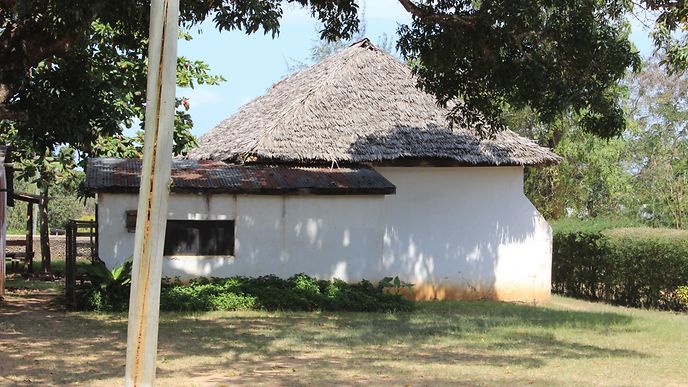
The Rabai Church is considered to be the origin of Christianity in East and Central Africa.
The Federal Foreign Office’s cultural preservation funds are being used to make the cultural, historical and religious significance of the Rabai site accessible to a wide public. As a national meeting centre, cultural site and memorial, it offers neighbouring communities the opportunity to become involved as well as scope for cooperation with universities.
The restoration of the structure will enable the Rebmann house to be used as a meeting centre for the local population and the church community. In addition to this, the original church will be used for an exhibition designed by the National Museums of Kenya. The project focuses on the restoration of the two residential buildings and the original church. The resulting opportunities for tourists and school classes to visit the museum will help to improve their cultural and historical understanding.
The construction of the memorial with a religious and cultural background on the Rabai premises is taking place within the context of efforts to come to terms with recent Kenyan history, strengthening national identity and promoting cultural dialogue based on partnership. The project is being implemented in cooperation with the National Museums of Kenya, the Anglican Church of Kenya in Rabai and the local government. Further information can be found here on the website of the National Museums of Kenya.
Promoted by: Cultural Preservation Programme of The Federal Foreign Office
Source: Ed. Federal Foreign Office
Preserving historic audio recordings (Namibia)
Namibia has a rich pop music heritage. The Federal Foreign Office supports a project to preserve historic audio recordings.
During decades of apartheid, not only did Namibian pop music receive no funding from government agencies, it was also controlled and in some cases even suppressed. Many audio recordings were often not kept for posterity at all or were saved only on private, fragile storage media, such as audio cassettes. This musical heritage was in danger of disappearing altogether.
The founders of the Stolen Moments Namibia Music History Untold research group, Aino Moongo and Baby Doeseb, set themselves the task of preserving these musical testimonies of the apartheid era for future generations. The Federal Foreign Office provided around 50,000 euros for this project within the framework of its Cultural Preservation Programme.
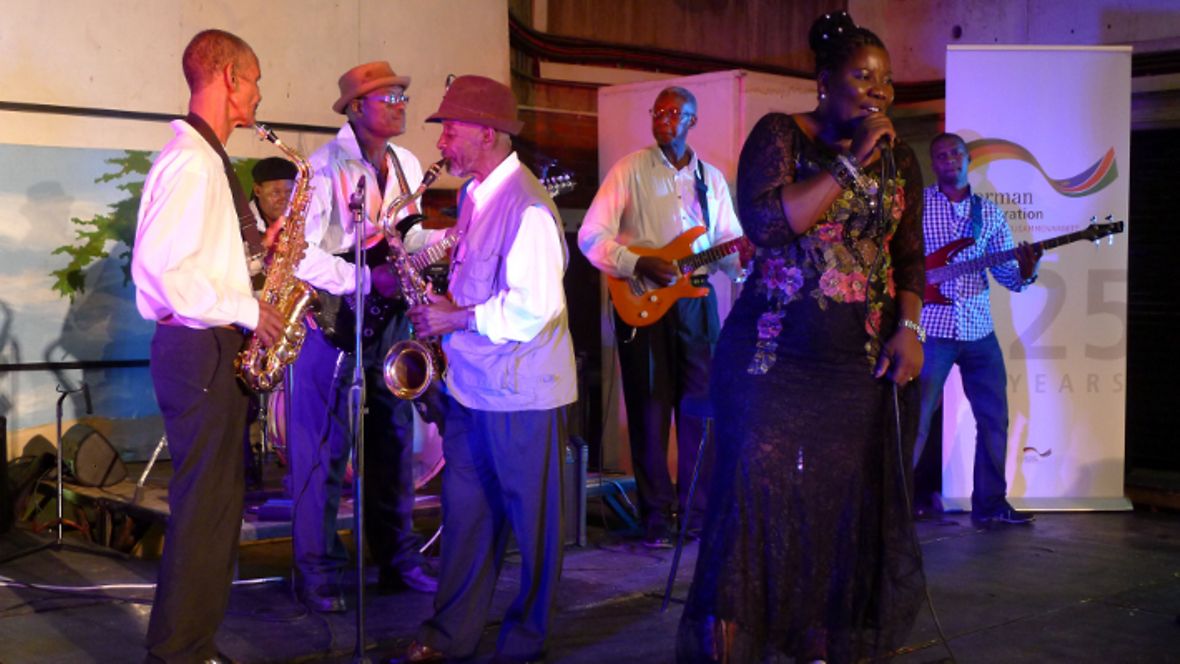
The technical equipment for digitising the recordings was provided within the context of the project. A German expert travelled to the country to train Namibian audio technicians, who then digitised numerous recordings and transferred the data to a music database. The digitisation of the music storage media has now been largely completed. An important part of Namibian music history has thus been made accessible both to researchers and to the general Namibian public. Not only academics but also the Namibian Broadcasting Corporation (NBC) and the National Archives of Namibia have access to the music via the database and are helping to revive knowledge about this musical genre, which was almost lost.
Aldred Dreyer, Chief Technology Officer at NBC, is happy: “The project is of great significance for the country and for NBC, and has helped preserve Namibia’s rich cultural heritage.”
Promoted by: Cultural Preservation Programme of The Federal Foreign Office
Source: Ed. Federal Foreign Office
